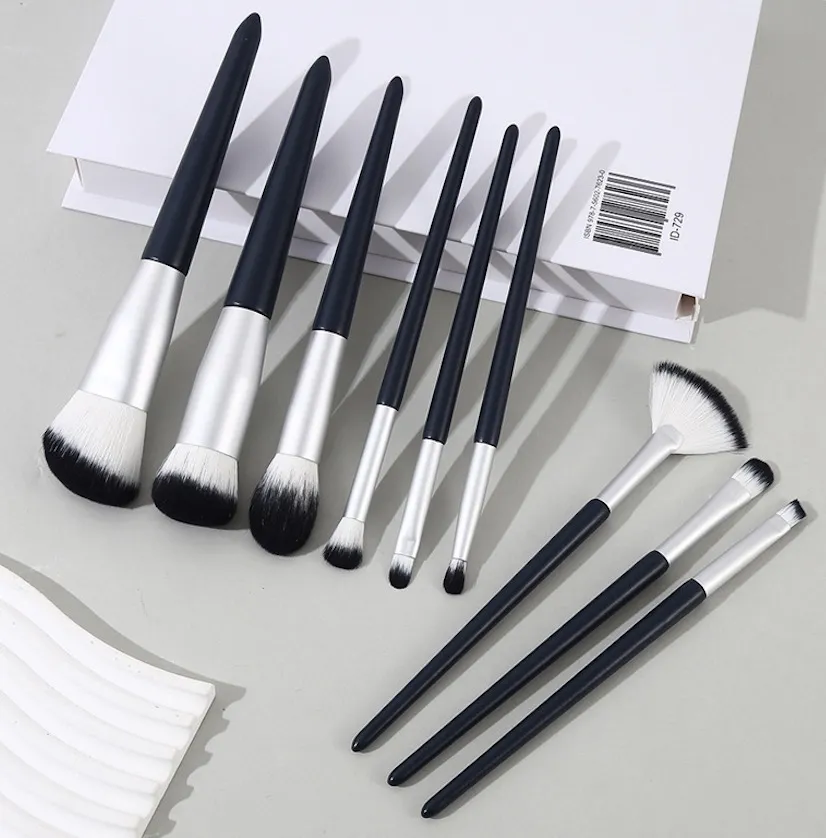Your customers are confused by vague replacement rules. This uncertainty can lead to poor hygiene, bad makeup application, and a negative experience with your brand’s high-quality tools.
Makeup brushes1 should be replaced every 1–3 years with proper weekly cleaning. However, you should replace them sooner if they shed, smell, feel scratchy, or the ferrule becomes loose. Professionals should replace high-use brushes every 6–12 months.
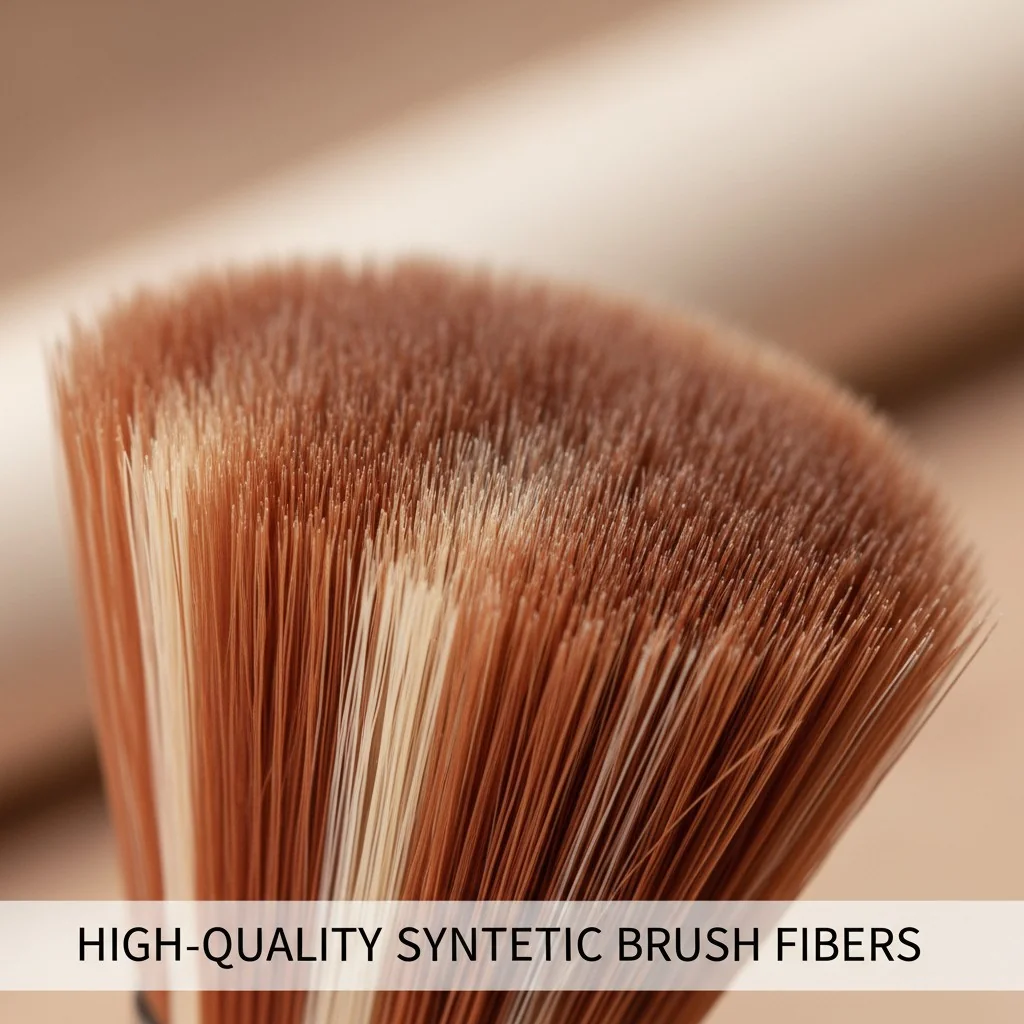
That simple answer is a great starting point for your customers. But as a brand founder, you need to know the details behind that timeline. Understanding the why helps you source better brushes, create content that builds trust, and position your brand as an expert in quality. When you know what makes a brush last, you can ensure the products you sell are truly built for performance. Let’s dive into the specifics so you can give your customers advice they can rely on.
A 2025 study found that 44.3% of makeup users rarely clean their brushes.True
A survey of 370 users in Jeddah revealed that a significant portion neglects regular brush cleaning, increasing hygiene risks.
Natural hair brushes are always better and last longer than synthetic ones.False
Modern synthetic fibers often have a longer lifespan because they are more resistant to frequent washing and absorb less product than natural hair, which can become dry and brittle.
How Does the Replacement Timeline Change for Different Users and Materials?
Confusing, one-size-fits-all advice doesn’t help your customers. Giving the wrong timeline for a pro makeup artist versus a home user can damage your brand’s credibility and their tools.
Here are specific, data-backed timelines you can share. For home users, powder brushes last 2–3 years, while cream/liquid brushes last 1–2 years. For pros, high-use brushes may only last 6–12 months.
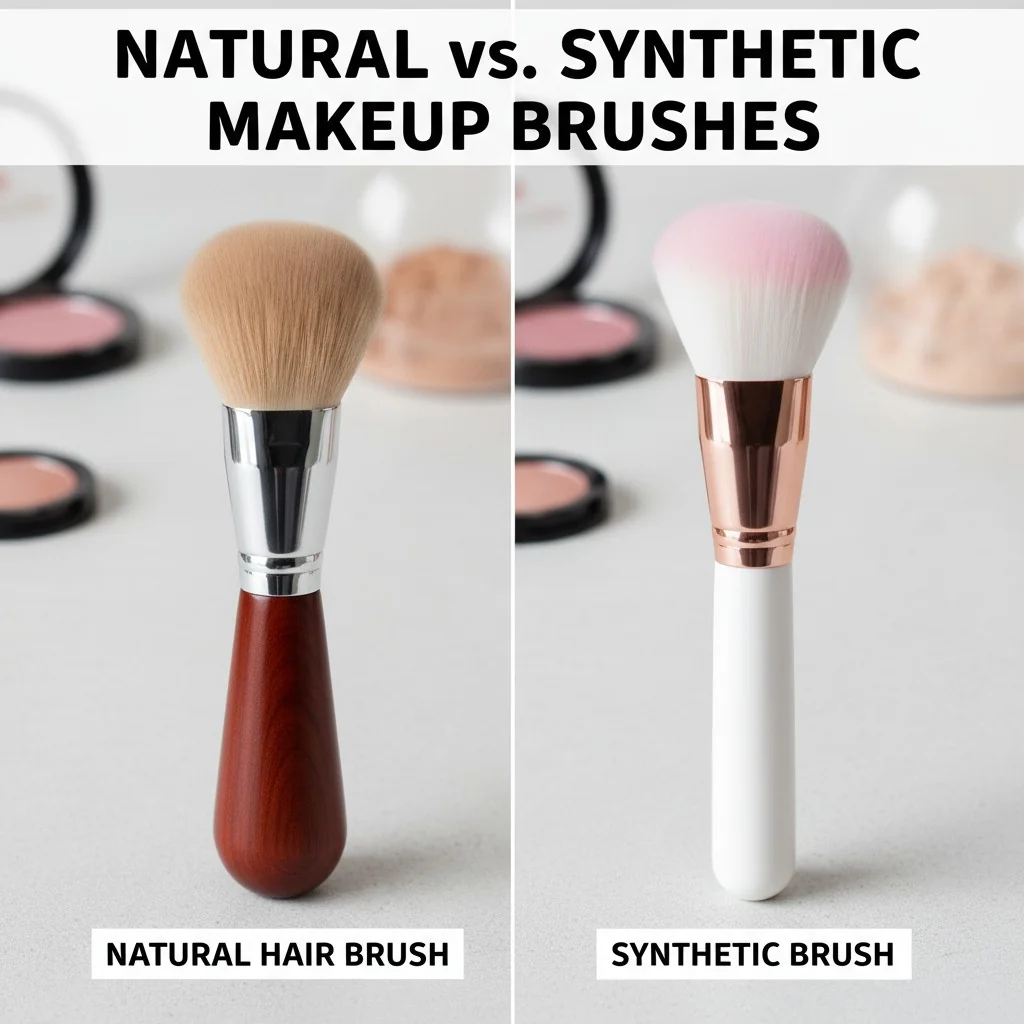
The standard "replace every two years" advice is a good rule of thumb, but it doesn’t tell the whole story. As a brand owner, you need to guide your customers based on their specific use case. I’ve seen firsthand in the factory how different materials and usage patterns affect a brush’s lifespan. Brushes used with liquid or cream products need more frequent replacement because the oils and pigments are harder to wash out. They build up over time and can degrade the fibers and the glue inside the ferrule. For professionals, the constant cycle of use and harsh disinfection wears brushes down much faster. This is a key reason why we work with brands to develop robust brushes that can handle a pro’s demanding schedule.
Here is a simple breakdown you can use for your brand’s educational content:
| Use Case | Brush Type | Recommended Lifespan | Key Reason |
|---|---|---|---|
| Home User | Powder (Eyeshadow, Blush) | 2–3 Years | Less residue, easier to clean. |
| Home User | Cream/Liquid (Foundation) | 1–2 Years | Higher oil and pigment load. |
| Pro/Salon | All High-Use Brushes | 6–12 Months | Daily use and disinfection cycles. |
| Material | Natural Hair | Varies (often shorter) | Can dry out and break with frequent, harsh washing. |
| Material | Modern Synthetic | Varies (often longer) | Resists product absorption and tolerates washing well. |
Brushes used for cream or liquid makeup should be replaced more often than powder brushes.True
Cream and liquid products contain oils and binders that are harder to clean, leading to faster buildup and potential degradation of the brush fibers and glue.
All synthetic brushes are made from the same material.False
Synthetic brushes are typically made from PBT or nylon, but the quality, tapering, and treatments (like anti-microbial properties) vary widely and significantly impact performance and longevity.
What Are the Real Hygiene Risks, and What Can Your Brand Do About Them?
Dirty brushes are not just a performance issue; they are a real health risk. A customer developing a skin infection from one of your brushes is a brand’s worst nightmare.
The data is clear: unwashed brushes harbor bacteria like Staphylococcus and E. coli. You can protect your customers and your brand by specifying anti-microbial fibers and durable construction in your brushes.

When I talk to brand founders, I always stress that a brush’s quality goes beyond how soft it feels. It’s also about safety. The American Academy of Dermatology (AAD) isn’t exaggerating when it recommends washing brushes every 7–10 days. A 2025 study in Jeddah was eye-opening: it found Staphylococcus and Micrococcus on personal brushes, and nearly 28% of users reported skin issues they linked to their tools. The risk is even higher in a salon setting. One 2023 study found that 100% of beauticians’ brushes were contaminated with bacteria like P. aeruginosa.
This is where you, as a brand, can make a huge difference. You can build safety directly into your product. When you develop your brushes with a manufacturer, you can specify features that reduce these risks. At Brushino, we guide our clients on these choices.
Key Brand Countermeasures:
- Anti-microbial Fibers: Specify Synthetic fibers2 that are engineered to resist microbial growth.
- Sealed Ferrules: Use high-quality epoxy and a secure crimp to prevent water from getting inside the handle, where bacteria can thrive.
- Wash-Testing Protocols: Ask your manufacturer to prove the brush’s durability. We can perform tests that simulate 100+ wash cycles to ensure the fibers, glue, and handle hold up.
A 2023 study found that 100% of sampled beautician brushes showed the presence of bacteria like P. aeruginosa and Bacillus.True
This study highlights the elevated risk of contamination in shared-use, professional environments, reinforcing the need for strict salon hygiene protocols.
Rinsing brushes with water is enough to disinfect them.False
Water alone does not kill bacteria like Staph or E. coli. A gentle cleanser or specialized brush soap is needed to break down oils and remove microbes effectively.
What Are the Clear, Performance-Based Signs That a Brush Needs Replacing?
Your customers often wait too long to replace their brushes. When a brush stops performing well, they might blame your makeup formula or the brush’s quality, not its age.
Give them clear, visual signs to look for. A brush should be replaced immediately if it’s shedding, frayed, smells bad, has a loose ferrule, or is linked to skin irritation.
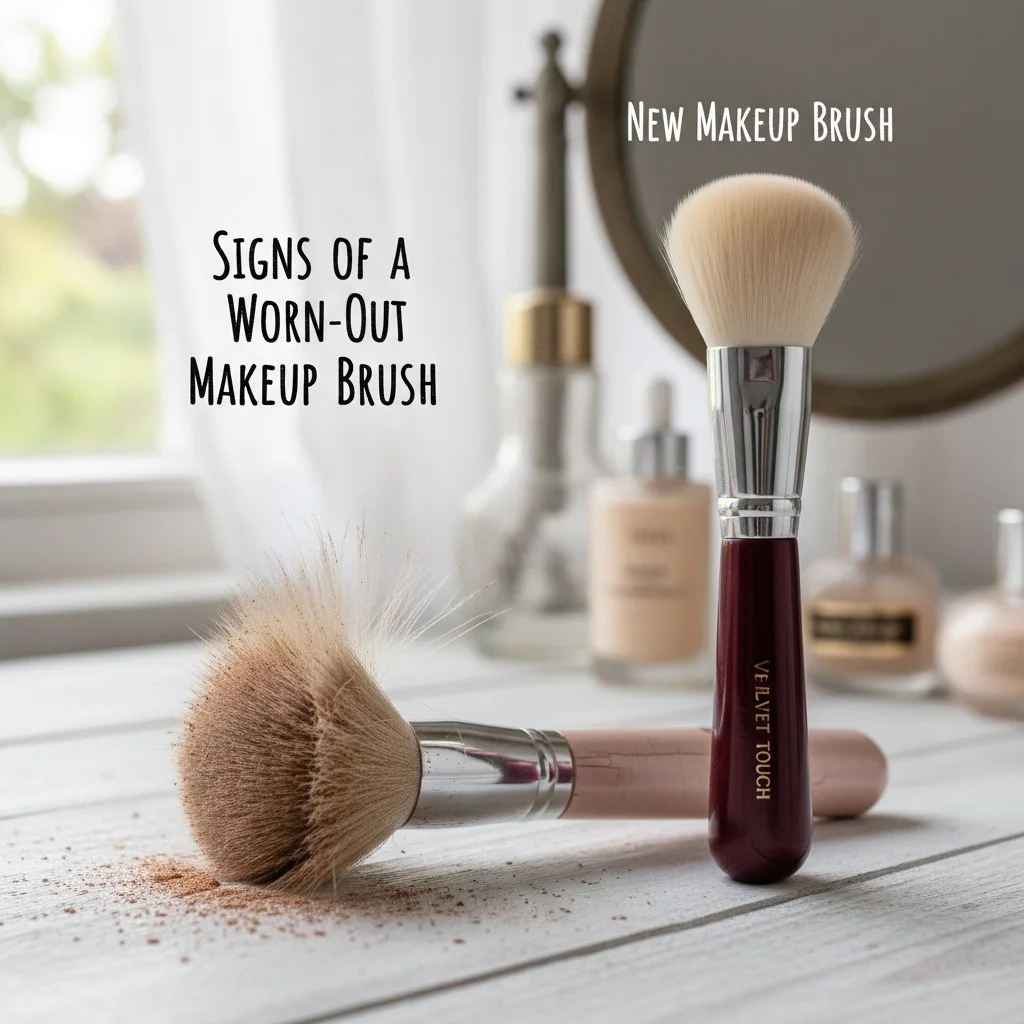
Instead of just giving a date on a calendar, it’s more powerful to teach your customers to trust what they see and feel. This empowers them and ensures they always have a great experience with your products. From my years on the factory floor, I know exactly what these signs of failure mean from a manufacturing perspective. A well-made brush shouldn’t fall apart easily. When it does, it’s a clear signal its functional life is over.
Here are the performance-first criteria you can share with your community:
- Shedding or Fraying: If the brush leaves fibers on your face, the glue bond has failed or the fibers themselves are breaking. The application will be streaky, and the feel will be scratchy.
- Persistent Odor or Discoloration: A smell that won’t wash out means there’s likely mold, mildew, or rancid product residue deep in the fibers. This is a major hygiene red flag.
- Loose Ferrule or Damaged Handle: If the metal part (the ferrule) wiggles, it means moisture has weakened the glue. This compromises your control during application and creates a pathway for bacteria to get into the handle.
- Breakouts or Irritation: If a customer experiences skin issues that persist even after they’ve started cleaning their brushes correctly, the tool itself might be the problem. It could be contaminated beyond cleaning or the frayed fibers could be causing mechanical irritation.
A loose ferrule is a cosmetic issue but doesn't affect the brush's hygiene.False
A loose ferrule creates a gap where water and bacteria can become trapped, leading to mold, mildew, and potential handle damage. It is a critical sign that the brush needs to be replaced.
Shedding is normal for a new makeup brush.True
A few loose fibers may shed during the first one or two uses, which is often a normal part of the manufacturing process. However, persistent and continuous shedding indicates a structural problem.
What Cleaning Schedules and Protocols Can Extend a Brush’s Life?
Your customers want their investment in your beautiful brushes to last. If your brushes wear out too quickly because of improper care, customers may feel disappointed and hesitate to purchase again.
You can solve this by teaching them Proper cleaning3 and storage. A consistent, gentle cleaning routine protects the fibers and glue, maximizing the brush’s lifespan and performance.
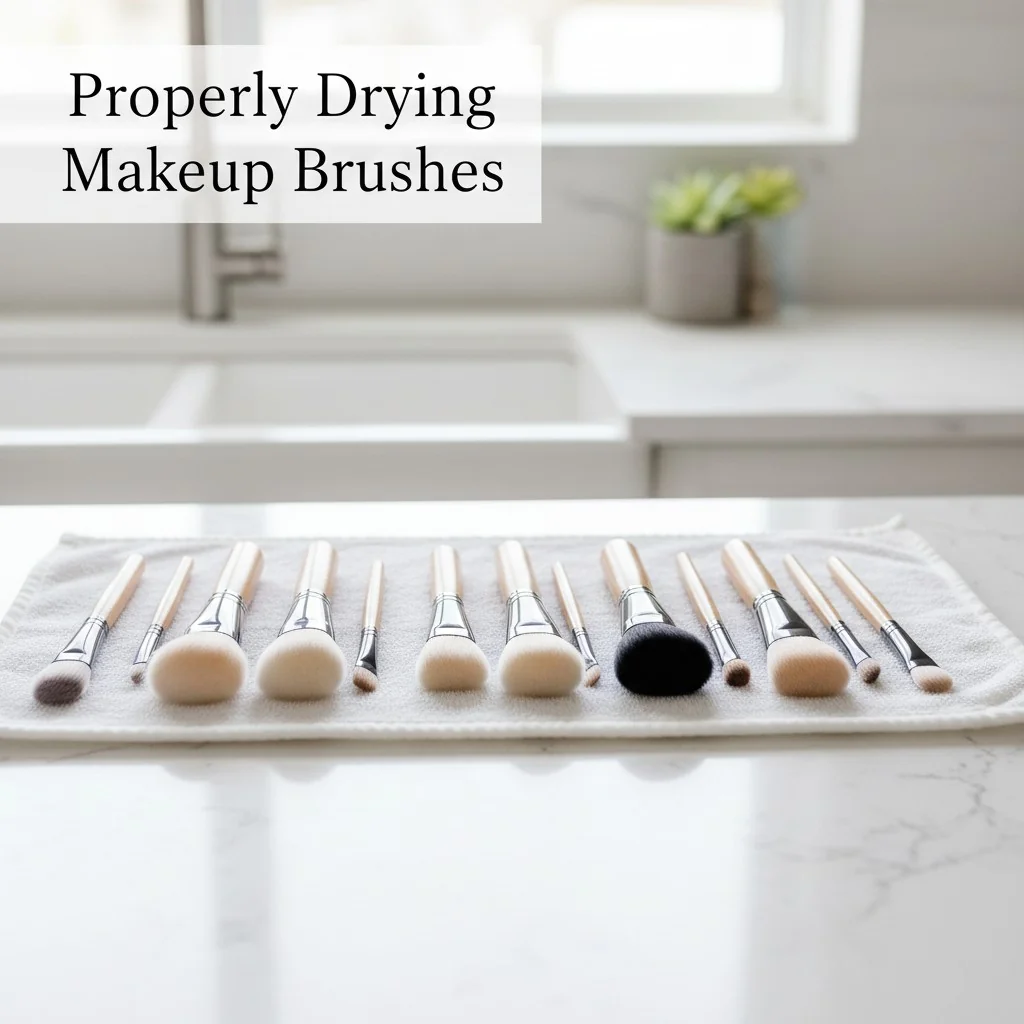
Helping your customers care for their tools is a huge value-add for any brand. It shows you care about their experience long after the sale. The goal of cleaning is not just hygiene, but also preservation. The biggest mistakes I see are using harsh cleansers and drying brushes upright in a cup. Both can destroy a brush. Harsh alcohol or solvents can dry out natural hairs and even weaken the epoxy in the ferrule. Storing a wet brush upright lets water seep down, loosening the glue and causing the head to fall off.
Here are simple, effective protocols you can recommend for both home users and professionals.
For Home Use:
- Weekly Wash: Use a gentle cleanser, like a mild face wash or a specialized brush soap.
- Proper Drying: After rinsing, gently squeeze out excess water, reshape the head, and lay the brush flat on a clean towel with the head hanging over the edge of a counter. This allows air to circulate and prevents water from running into the ferrule.
- Safe Storage: Once completely dry, store brushes upright in a holder or flat in a drawer where the heads aren’t compressed.
For Salon/Pro Use:
- Between Clients: Use a fast-evaporating spray cleanser on a paper towel to quickly disinfect brushes.
- Rotate Sets: Have multiple sets of your most-used brushes so one set can fully dry while another is in use.
- Daily Deep Clean: At the end of the day, perform a full wash and dry as described for home use. A UV cabinet can also be used for drying and sanitizing where permitted.
You should dry makeup brushes standing upright in a cup.False
Drying brushes upright allows water to seep into the ferrule, which can dissolve the glue, loosen the handle, and encourage mold growth. They should be dried flat or angled downwards.
Using a gentle face wash is a safe way to clean makeup brushes.True
A gentle, mild face wash is effective at breaking down makeup and oils without using harsh chemicals that could damage the brush fibers or the glue in the ferrule.
Conclusion
Knowing when and why to replace brushes helps you build better products and educate your customers. Focus on quality materials and clear care instructions for lasting performance and brand trust.
References
-
Understanding how to care for makeup brushes ensures longevity and optimal performance, enhancing customer satisfaction. ↩
-
Synthetic fibers offer durability and performance advantages, making them a popular choice for quality brushes. ↩
-
Regular cleaning is crucial for hygiene and performance; learn effective methods to keep brushes in top shape. ↩


